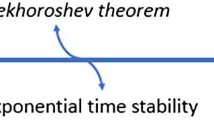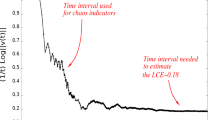Abstract
To predict the future of Celestial Mechanics and to investigate unsolved problems for the next millennium contradicts the nature of our field of science which is based on non-integrable and transcendental equations with short time predictability. The reliability and predictability in our field depend on several factors, most of them unpredictable. Numerical predictions depend on the development of computer technology, which is itself not predictable. New analytical approaches call for the genius of Newton. We must realize that between Ptolemaeus (100–178) and Copernicus (1473–1543) our field received little attention. Between 1700 and 1800 the explosion occurred (Newton, Euler, Laplace, Lagrange and Gauss) followed by the period of 1800–1900 associated with Hamilton, Hill, Jacobi, Poincaré and Tisserand. Can we expect anyone to make similar contributions in the next 1000 years?
The entrance and emphasis of probability in our field certainly will continue. Speaking about bounds of trajectories instead of individual orbits gains significant popularity. Theory of stability and chaos are expected to receive more and more attention together with Poincare's conjectures concerning the denseness of periodic orbits in the set of bounded orbits.
Planetary computations for long time have shown considerable advances, partly due to computer advances as well as the selection of the proper formulation of the problems. The preparation of “exact” short time ephemerides and qualitative long time predictions require initial conditions with small observational errors, the use of proper models (including relativity effects and non-conservative forces) and the use of correct values of astronomical constants. The results of such calculations in the future should include approximate estimations of errors in the outcome.
The observations and orbital calculations of Earth-crossing asteroids should receive special attention along with development of various techniques of space dynamics to avoid collisions. Interplanetary orbit calculations of space probes with optimizations included, shall receive additional attention since interplanetary flights expect to become regular travels in the next millennium. Here, again, the use of proper models, constants and planetary ephemerides will be essential.
This paper was prepared with the help of many of my colleagues whose suggestions and ideas were incorporated with my many thanks.[/p]
Similar content being viewed by others
References
Hill, G. W.: 1878, Researches in the Lunar Theory, American Journal of Mathematics, 1, 129–245.
Lagrange, J.: 1867–1892, Oeuvres, Gauthier-Villars, Paris.
Liapunov, A.A.: 1892, The General Problem of the Stability of Motion, Commun. Math. Soc. Krakow, 2, 1.
Poincaré, H.: 1892–1899, Les Méthodes Nouvelles de la Mécanique Céleste, Gauthier-Villars, Paris.
Sitnikov, K.: 1960, The Existence of Oscillatory Motions in the Three-body Problem, Dokl. Akad. Nauk USSR, 133, 303.
Strömgren, E.: 1922, Forms of Periodic Motion in the Restricted and in the General Problem of Three Bodies, Copenhagen Obs. Publ., 39.
Szebehely, V.: 1989, Adventures in Celestial Mechanics, University of Texas Press.
Szebehely, V.: 1967, Theory of Orbits, Academic Press.
Vinti, J.P.: 1959, A New Method of Solution of Unretarded Satellite Orbits, National Bureau of Standards.
Author information
Authors and Affiliations
Rights and permissions
About this article
Cite this article
Szebehely, V. Open problems on the eve of the next millennium. Celestial Mech Dyn Astr 65, 205–211 (1996). https://doi.org/10.1007/BF00048447
Issue Date:
DOI: https://doi.org/10.1007/BF00048447




